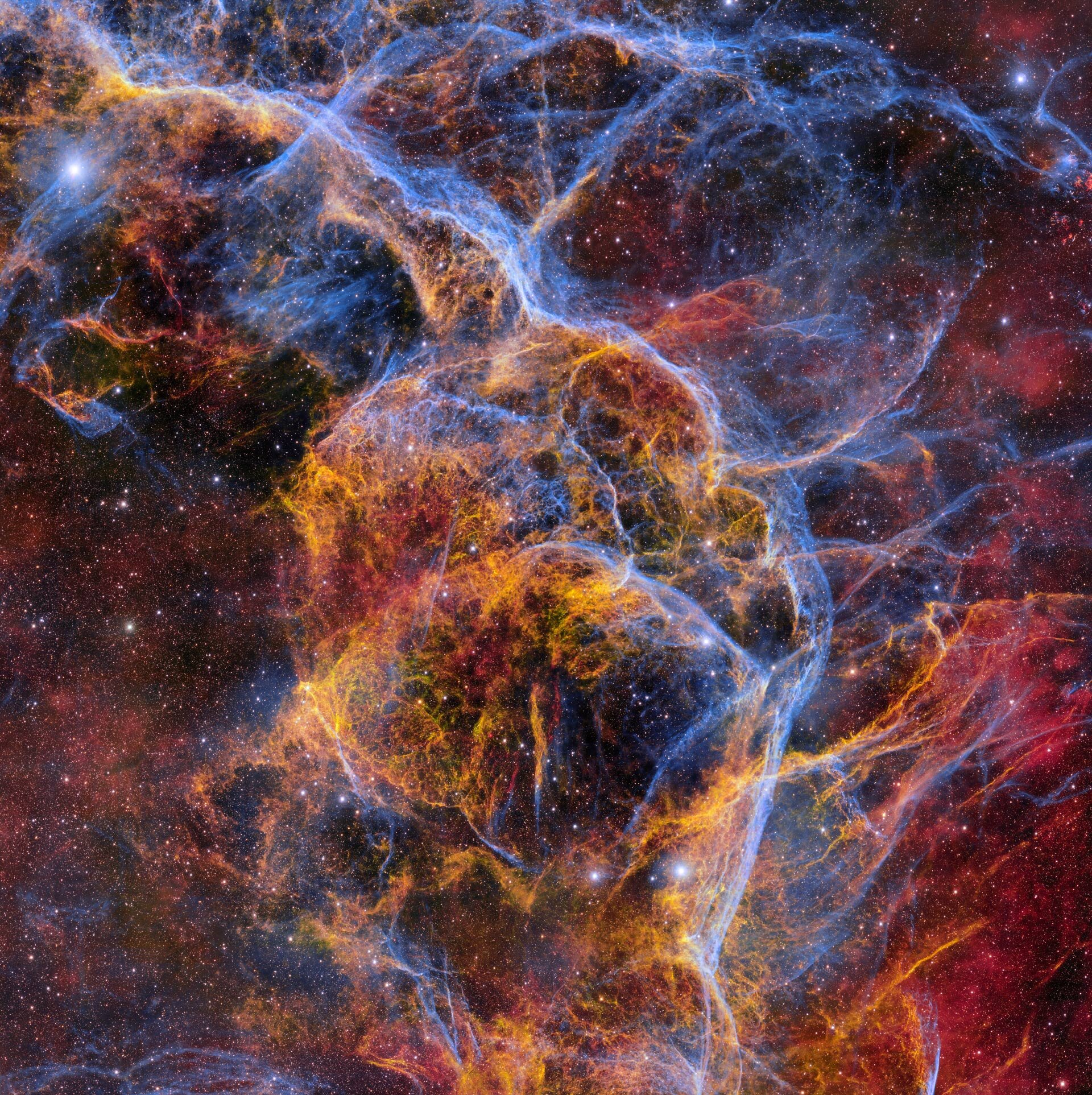💥 Supernovae may have already altered our climate, and it will happen again
Published by Adrien,
Source: Monthly Notices of the Royal Astronomical Society
Other Languages: FR, DE, ES, PT
Source: Monthly Notices of the Royal Astronomical Society
Other Languages: FR, DE, ES, PT
Follow us on Google News (click on ☆)

The Vela supernova remnant, located 800 light-years from Earth, captured by the Dark Energy Camera.
Credit: CTIO/NOIRLab/DOE/NSF/AURA
Robert Brakenridge, a researcher at INSTAAR, published a study in the Monthly Notices of the Royal Astronomical Society. He establishes a link between nearby supernovae and abrupt climate changes in geological history. His model shows how these radiations could affect the ozone layer and atmospheric methane.
Tree growth rings serve as natural climate archives. Brakenridge identified 11 radioactive carbon peaks over 15,000 years, matching known supernovae.
The star Betelgeuse, in the Orion constellation, could explode into a supernova at any moment. Such an explosion, although distant, would provide a unique opportunity to study these phenomena in real time. Scientists thus hope to better understand and anticipate their effects on Earth's climate.
How can a supernova influence Earth's climate?
Supernovae emit high-energy cosmic radiation. When reaching Earth, these radiations can modify the chemical composition of the atmosphere. They have the potential to weaken the ozone layer and reduce methane concentrations (a potent greenhouse gas).
These atmospheric changes could lead to global cooling and increased UV radiation reaching the surface. Studies suggest this could affect biodiversity and increase the frequency of forest fires.
Trees, by absorbing atmospheric carbon, record these events in their growth rings. This allows scientists to trace the impact of supernovae on climate through the ages.
What is a supernova remnant?
A supernova remnant is the expanding gaseous structure resulting from a star's explosion. These matter clouds can extend over tens of light-years and emit radiation for millennia.
Remnants are natural laboratories for studying high-energy physics. They contain heavy elements synthesized during the explosion, essential for planet and life formation.
Observing these phenomena helps astronomers understand stellar life cycles. The Vela remnant, for example, provides valuable clues about supernova mechanisms.
These structures also play a role in enriching the interstellar medium, dispersing elements necessary for the formation of new stars and planets.